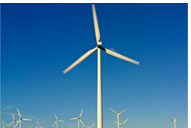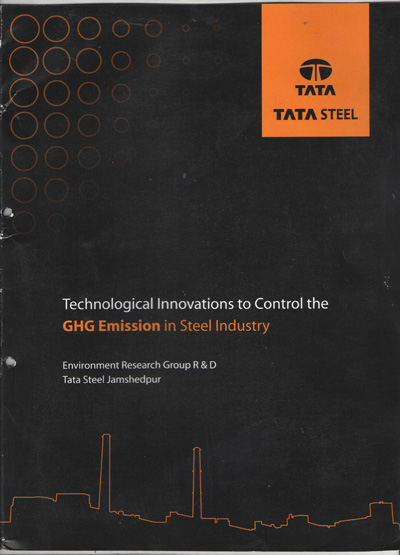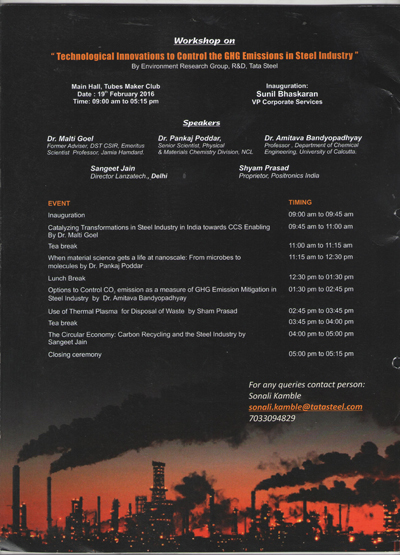




Invited by TATA Steel to Workshop on Technological Innovations to control the GHG Emissions in Steel Industry |
||||||||
Invited by TATA Steel to in Workshop on “Technological Innovations to control the GHG Emissions in Steel Industry” by Environment Research Group R & D, Tata Steel aton 19th February 2016 Jamshedpur.
Dr. (Mrs.) Malti Goel former Adviser, DST and President, Climate Change Research Institute was invited by Tata Steel to address issues in technological innovations to control GHG emission in steel industry. The workshop was inaugurated by Mr. Sunil Bhaskaran, V.P. Corporate Services and attended by industry personal. Other invitees included Dr. Pankaj Poddar, Dr. Amitavava Bandopadhyay and Sh. Sangeet Jain.
In her lecture on ‘Catalyzing Transformations in Steel Industry in India towards CCS enabling technology’ Dr. Malti Goel discussed technology advancements in fossil fuel based energy generation, the science of climate change and CCS as enabling technology for reduction of built up of CO2 concentration in the at mosphere. Global framework towards low carbon technology rests on four pillars. First pillar is Performance and benchmarking-through demonstration of application of currently available technologies. The second pillar is Energy Intensity and New steel development –to improve the energy efficiency of the product. Third pillar is Breakthrough and Non CO2 emitting-through emerging technologies that have potential to reduce steel industry’s CO2 emission with the increased investment in R&D. Fourth pillar would rest on Monitoring and reporting –of steel plants for world ranking. Presenting the steel industry scenario in India she highlighted the joint R&D initiatives of DST under its Intersectoral Science &Technology Program. To attain the goals of Intended Nationally Determined Contributions (INDCs), India must accelerate the pace of economic development, while achieving reduction in CO2 emissions per unit of energy consumed. Of specific importance would be: improvement in coal quality, improving energy efficiency and application of CO2 sequestration technologies. There is need to address related risks and financial burden through adoption of policies and regulations.
|
||||||||
Home | About us | Member | Brochure | Highlights | Education & Awareness | Our Patrons | Disclaimer | Copyright | Gallery | Contact |
||||||||
| Copyright © Climate Change Research Institute |
|

